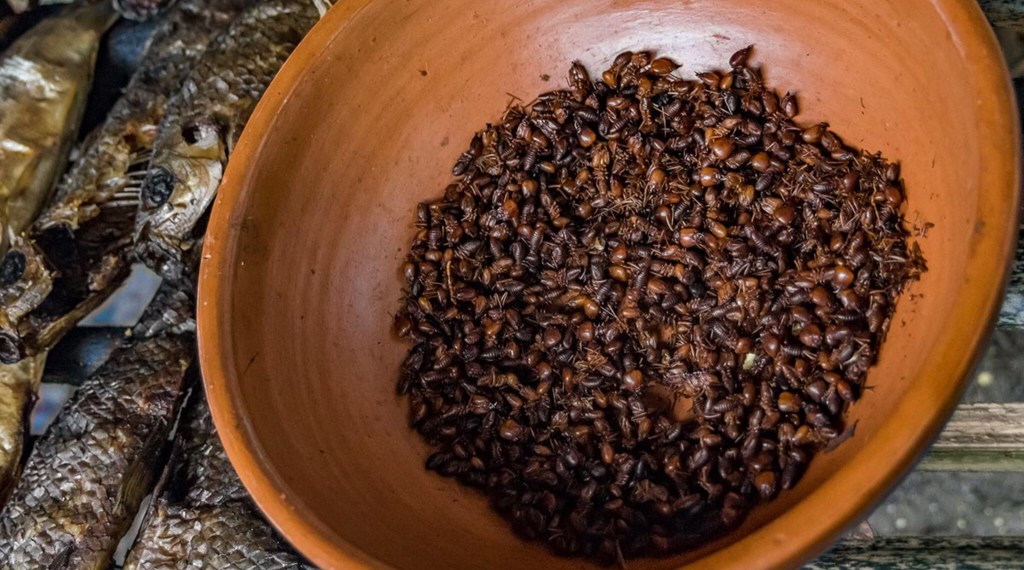Chicatanas: the Mexican seasonal treat that descends from the sky in swarms
3 min read
Chicatanas are one of the more controversial delicacies in Mexican cuisine, yet their unique flavor and texture are fundamental to regional salsas and moles commonly eaten throughout Oaxaca’s diverse coastal areas, central valleys and mountains.
As Mexico’s fifth-largest state, Oaxaca is made up of seven different regions, each with its own culinary traditions, and chicatanas are an equally appreciated delicacy in each of them.

At the start of the rainy season in late spring/early summer, families in Oaxaca venture outside with pails and plastic containers.
As storms roll in, these beautiful, big flying ants known as chicatanas will flee their nests, filling the sky with swarms. Making for the ultimate foraging experience, the bugs are plentiful, free, and a short-lived seasonal delicacy.
The harvest generally happens during an (increasingly) narrow time of year after the torrential rains have soaked the ground and left puddles in their wake.
The chicatanas flee their flooded nest, el Arrieral, in search of food and new shelter, and are then collected by hand in the middle of the night, usually between 3am – 5am.
One by one, they are picked up off the ground and placed into buckets, with the harvesters trying to work as fast as possible while also trying to avoid their painful bites. Some people even go so far as to stand in buckets of water to ensure none of the ants can crawl up their legs.

Known to impart a crunchy, earthy, smoky flavor to whatever dish they’re added to, the first step in turning the ants into a meal is to toast them on a comal, a large, flat griddle traditionally fueled by a wood fire.
The chicatanas turn crispy and at this point become a portable crunchy snack to be sprinkled on top of tortilla-based street foods such as memelas, tlayudas, or tacos.
The cooking process removes their wings, and preserves the chicatanas for dry storage throughout the upcoming season, ensuring their quality stays intact.
The most popular preparation, however, is salsa de chicatanas. To make it, chefs cook musky avocado leaves and fiery chile de arbol peppers in the comal, then pound them with a molcajete (a traditional Mexican mortar and pestle made from volcanic rock) alongside the ants, raw garlic, and salt. The smoky, aromatic, rustic sauce can be scattered over eggs, folded inside a quesadilla, or even stirred into a soup.
Recently, also high-end chefs have turned their attention to chicatanas.
At his smoothly stylish Oaxaca City spot Origen, local chef Rodolfo Castellanos blends the ants into a dark mole sauce that he serves under roasted pork loin, while chef Enrique Olvera of the upscale Mexico City restaurant Pujol binds them into an eggy mayonnaise used as a dip for steamed baby heritage corn.
At Cosme in NYC, Chef Enrique Olvera and CDC Gustavo Garnica serves chicatanas on their fluke entree with romesco and green garlic, and sister property Damian uses them in a salsa macha on their celery root dish.
Even at Beverly Hill’s Mirame, Chef Joshua Gil serves Grilled Queso Anejo with artichokes, asparagus, and chicatana salsa.
Either way, if you choose to enjoy one of Mexico’s most unique gastronomic specialties, you will try an authentic specialty that honor both the land and its traditions.





Images from web – Google Research





